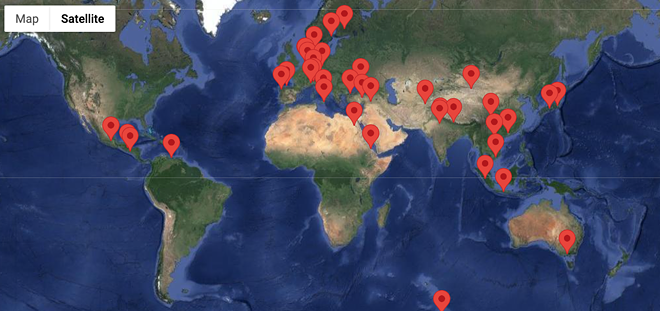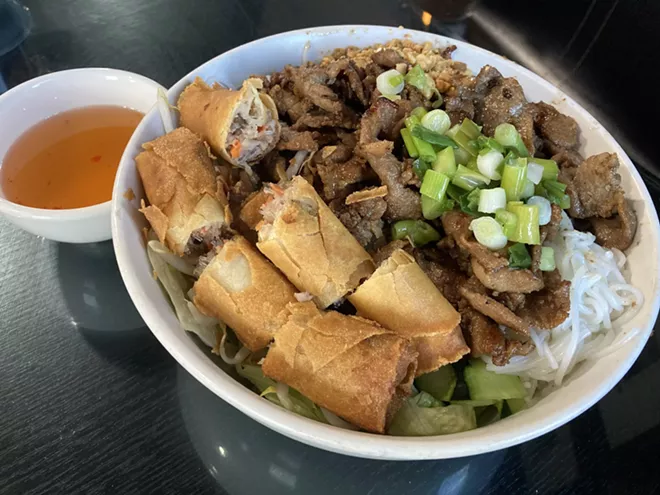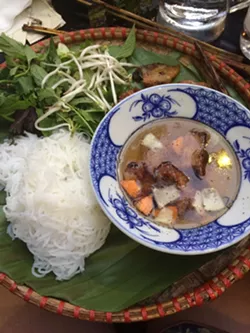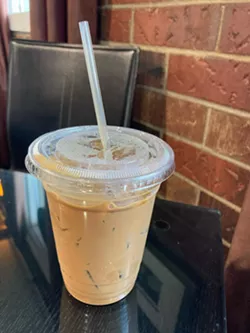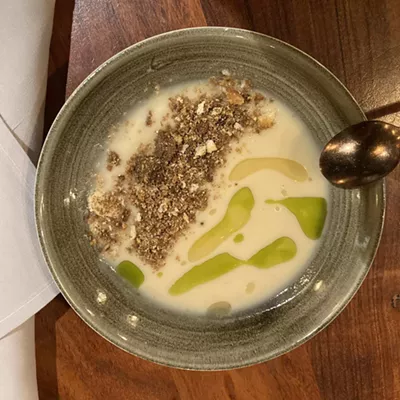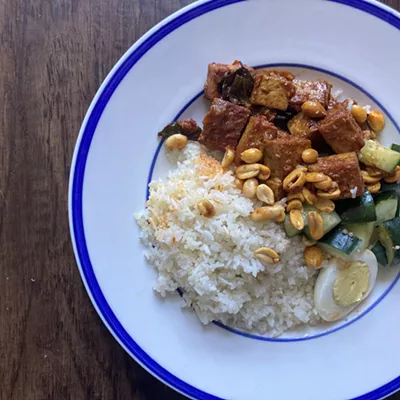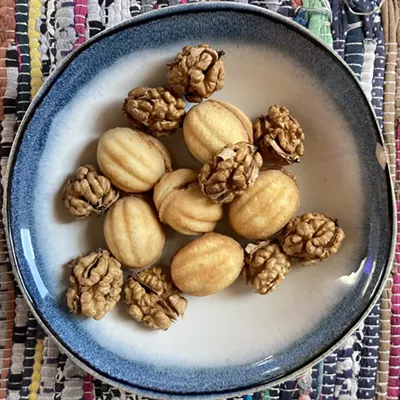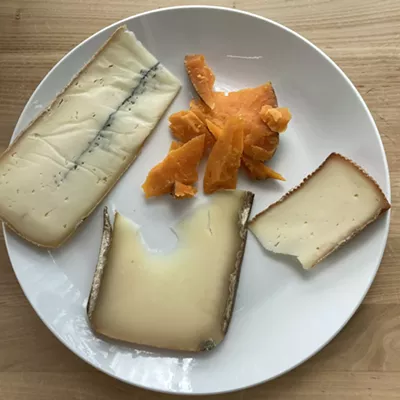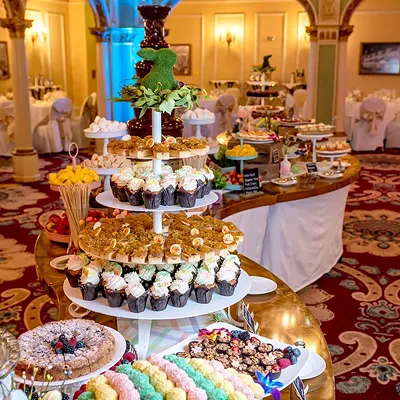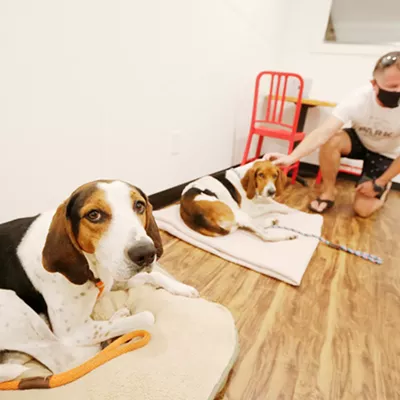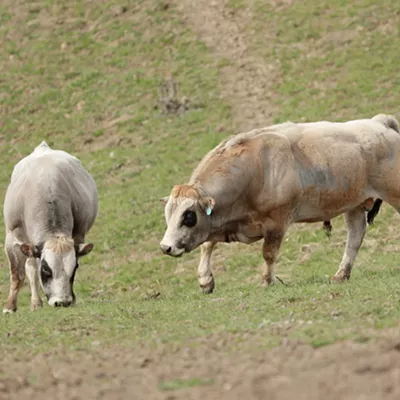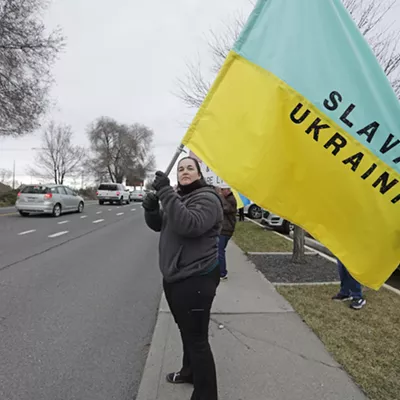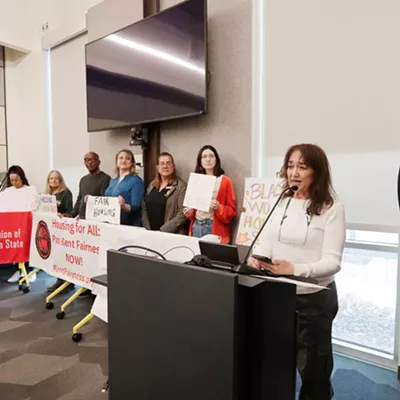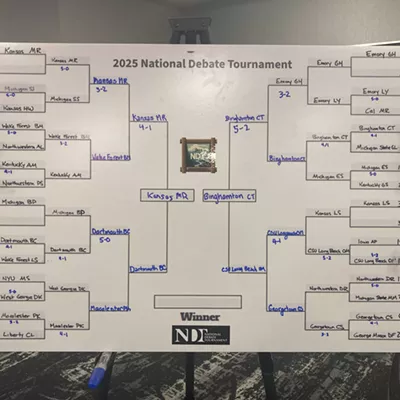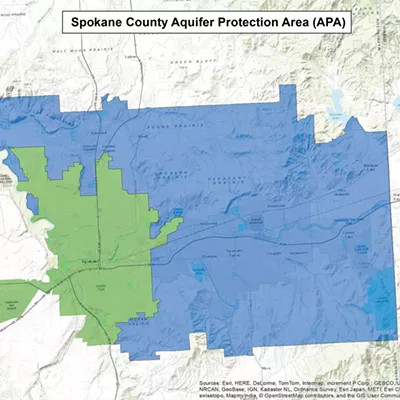Around the World in 80 Plates: Bun cha and coffee from Vietnam
[
{
"name": "Broadstreet - Instory",
"component": "25846487",
"insertPoint": "4",
"requiredCountToDisplay": "4"
},{
"name": "Broadstreet - Empower Local",
"component": "27852456",
"insertPoint": "8",
"requiredCountToDisplay": "8"
},{
"name": "Broadstreet - Instory",
"component": "25846487",
"insertPoint": "12",
"requiredCountToDisplay": "12"
},{
"name": "Broadstreet - Instory - 728x90 / 970x250",
"component": "27852677",
"insertPoint": "18",
"requiredCountToDisplay": "18"
},{
"name": "Broadstreet - Instory",
"component": "25846487",
"insertPoint": "5th",
"startingPoint": "23",
"requiredCountToDisplay": "24",
"maxInsertions": 100
}
]
This is an installment of the Inlander's yearlong project "Around the World in 80 Plates," a quest to find 80 foods and drinks in the Spokane area representing 80 different places. Read the introduction to the project here.
Count of dishes/places: 41
Hey there, Around the World readers and eaters — we're officially halfway through our project!
At this point in Verne's adventure epic, Phileas Fogg and Jean Passepartout are running from arrest in Hong Kong. To celebrate the midpoint of her journey, Nellie Bly was exploring Penang, an island of the Malay peninsula.
I've saved one of my favorite meals of all time for this momentous marker. It's also from a hot, tropical Asian country on the coast. So jump on a hot air balloon, stow away on a steamer or hop aboard the next train, and away we go!
BUN THIT NUONG FROM SOUTHERN VIETNAM
I lived in Hanoi, Vietnam, for two years, teaching English, driving motorbikes and sweating. Let me tell you, the perspiration was worth it. It's a gorgeous country with very hospitable people and very, very good food.
I'm not alone in thinking this. Vietnam was one of Anthony Bourdain's favorite places to eat, too.
Most Vietnamese food in the US, it seems to me, is from southern Vietnam. After all, a lot of the Vietnamese people who fled to the States during the 1970s were from Saigon. Plus, southern food is known in Vietnam for being sweeter and spicier than northern food, which gets accused in its own country of being bland.
I don't think northern food is bland. It's got plenty more fish sauce — a deeply salty, umami sauce — than most Americans are used to. It usually features grilled meat and fresh herbs that pack plenty of flavor.
But my favorite Vietnamese meal, a northern dish called bun cha, is barely ever on American menus.
Bun means noodles, and cha refers to ground pork patties caramelized on the grill. Together, bun cha is a meal of crispy pork dunked in a clear, salty dipping sauce with a pile of noodles and a heap of fresh herbs and salad greens next to it.
It's up to you to combine the ingredients how you like. You can put the noodles in the broth and eat it like a soup, or load up lettuce leaf with noodles and meat to make a lettuce wrap and then dip it into the broth. The second way was my favorite, especially as my chopstick skills solidified.
This meal is so good that when former President Barack Obama visited Hanoi in 2016, Bourdain, who also happened to be in Hanoi, invited him out to eat at Bun Cha Huong Lien, a small shop in the city's Old Quarter.
The meal made headlines across the world the next day. And they confirmed that, yes, Bourdain paid.
Bun Cha Huong Lien is now commonly referred to as Obama Bun Cha, and has a glass cage around the table where Obama and Bourdain ate.
My friends and I ate next to the Obama-Bourdain shrine when we went out for bun cha one weeknight. It wasn't anything out of the ordinary for a family run shop, but it was good bun cha, because bun cha is always good.
I went to Pho Van on Division Street expecting to order banh mi, a Vietnamese sandwich with a fascinating history spanning French colonialism and modern food bloggers. I was sure it would make a great Around the World installment. But I scanned the menu anyway just to be polite.
Then, Number 16 caught my eye — Bun Thit Nuong Cha Gio. "Thit nuong" is another version of grilled meat, and the photo on the menu looked suspiciously familiar (though menu photos can't always be trusted). I decided to ditch my original plan and go for it.
Within minutes, a server brought out a huge bowl of noodles, grilled pork, fresh veggies and nuoc cham, a similar dipping sauce to the one used in bun cha. I was right — it was closest thing I've found to my favorite meal since coming back to the States.
A little bit of internet searching confirmed it. Bun thit nuong is the southern version of bun cha, with strips of grilled pork instead of ground pork patties and the dipping sauce to the side, plus "cha gio," or fried spring rolls, on top.
Overall, I was thrilled. It was salty, sour and sweet, with crunch from the veg and the crispy edges on the pork. The addition of the fried spring roll was more than welcomed.
I've all but given up on finding bun cha in the US, but bun thit nuong is a very helpful substitute. I won't try to settle the debate on whether northern or southern food is better — I'll just be thankful for what I've got. I like to think that Bourdain would enjoy this family-owned Vietnamese spot, too.
COFFEE FROM NORTHERN AND CENTRAL VIETNAM
The first time I drank Vietnamese coffee, I felt the buzz through my entire body. I wasn't sure if it was the amount of caffeine — almost twice as much as is in a typical cup of American coffee — or the sugar from the thick layer of sweetened condensed milk.
It didn't really matter. I was hooked.
Coffee wasn't grown in Vietnam until French colonists brought it with them in the late 1850s. The first plant was supposedly planted by a French Catholic priest in northern Vietnam in 1857.
But coffee production didn't grow much until the 1970s, when Vietnam started trading coffee with other Communist countries. Farmers found out that Robusta beans grew very well in the central highlands of Vietnam.
Then, coffee production really took off in the 1990s under a new, more open economic policy called Doi Moi. Vietnam is now the second- or third-largest exporter of coffee in the world, depending on the year, and consistently the world's top exporter of Robusta coffee.
Despite huge amounts of exports, Vietnamese coffee cups are usually very small. Traditionally, they're a round glass cup a couple inches tall and topped with a phin, a small metal filter that sits on top of the cup.
Plenty of Robusta grounds are put in the filter, and then the hot water is poured in. It steeps while it slowly, slowly, slowly filters through the tiny holes at the bottom. The result is an incredibly intense few tablespoons of coffee. (That's coming from someone who drinks a double shot of espresso every morning.)
To offset the bitterness, it's usually stirred together with a heavy dollop of sweetened condensed milk into a creamy, caramel-colored lightning bolt of energy. If you want it cold, the powerful mixture can be poured over a full glass of ice. Don't worry — you're in no danger of watering it down too much.
At Pho Van, I knew I probably shouldn't drink that much caffeine after dinner. But I hadn't had Vietnamese coffee since I left Hanoi. And there it was, taunting me, daring me to live a little, the same dare that convinced me to move across the Pacific in the first place.
Ignoring the devastation to my bedtime routine, I chose adventure. I took one sip and felt that buzz all over again. Bitter, sweet and silky smooth — it was everything I remembered it to be. That night, being wide awake well after midnight was also just like I remembered jet lag to be.
But as I'm sure Fogg, Passepartout and Bly would agree, traveling around the world isn't without a few sleepless nights. I think we'd all say it was worth it. ♦
Have an idea for what I should eat next? Wanna make me a traditional dish from your hometown? Send 80 Plates tips and ideas to elizab@inlander.com.

